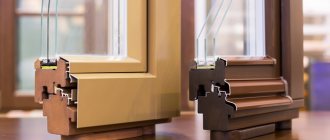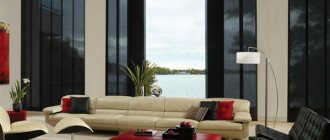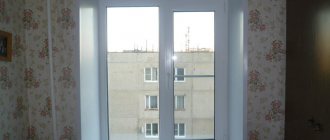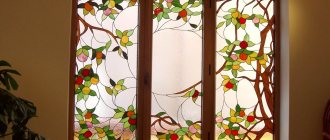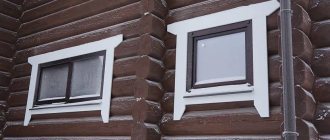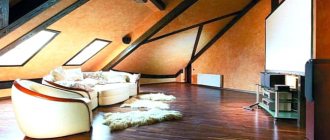Life in a metropolis can hardly be called quiet and calm. Being outside the house, you have to put up with this, and the modern city dweller is more likely to be surprised by the ringing silence than the usual hum of transport and technology. However, a noisy environment is unlikely to contribute to proper rest at home or concentration at work.
The level of sound insulation of premises mainly depends on the type of glazing of light openings, that is, on the windows and, in particular, the double-glazed windows installed in them. They will be discussed in detail below.
What is the difference between soundproofing double-glazed windows and ordinary ones?
In budget plastic windows, as a rule, single-chamber double-glazed windows are installed, the glass of which is of the same thickness, and the space between them is filled with dried air. The sound insulation properties of such products are much higher than traditional wooden blocks that were common in the recent past. But in some cases this is not enough, especially since modern technologies can significantly reduce the penetration of noise into the room by changing the design of the double-glazed window and its filling.
A sound-insulating double-glazed window consists of three or more glasses, the thickness of which is different.
To achieve an even greater soundproofing effect, increase the lumen of one of the chambers and fill it with inert gas. The use of special glass, such as triplex, also helps reduce noise penetration.
How effective is noise reduction?
External noise in the city or near highways with busy traffic can exceed 80 dB, and sometimes reach critical and even harmful values (the roar of the engine of high-speed motorcycles - 110 dB). For a relatively comfortable stay in a room, the background noise in it should not exceed 40 dB during the daytime and 30 dB at night. Such conditions can only be achieved if the window neutralizes at least half of the external sounds.
The degree of sound insulation depending on the type of glazing and the design of the window unit:
- Traditional wooden windows absorb less than 20 dB, while some of the noise penetrates due to the loose connection of the sashes to the frame. Regular single glass, 4 mm thick, provides an insulation level of 20 dB.
- Budget metal-plastic structures with conventional double-glazed windows (2 glasses of 4 mm at a distance of 16 mm) - 27 dB. A noticeable difference compared to the first point is achieved due to the greater tightness of PVC windows.
- An additional chamber in a double-glazed window increases the degree of noise resistance by only 1 dB (at the same distance and glass thickness). So a double-glazed window with two 10 mm chambers and three 4 mm glasses absorbs 28 dB.
- A more productive approach is to install a single-chamber double-glazed window filled with argon instead of conventional dehumidified air. Two 4mm glasses with 16mm spacing and Ar-fill provide insulation up to 32dB.
- A similar result can be achieved using glass of different thicknesses. The glass unit formula is 6/16/4, where 16 is the distance, and 6 and 4 are the thickness of the glass in mm, which reduces the penetration of external noise by 32 dB.
- Triplex (three-layer glass) combats sound most effectively. A single-chamber double-glazed window 4/12/9 absorbs 42 dB, if you add another chamber (4/10/4/10/9), this figure will increase to 44 dB.
Characteristics of glass and double-glazed units
A little theory
In order for visitors to understand where the “legs come from” in the matter of soundproofing windows, and not take everything on faith, it is necessary to have an idea of the physics of the process. So a little theory. May acousticians forgive me for the simple language of explanation and not always correct comparisons, but it won’t work any other way.
What is noise and its types
At the everyday level, the concepts of sound and noise are identified. This can be seen using a simple example: no one sees the difference in the concepts of sound insulation and noise insulation, which is not entirely correct. Sound is the rapid vibration of molecules (atoms) of air or another medium (water, solids). Noise is a collection of non-periodic sounds of varying intensity and frequency. Therefore, in the future we will talk about noise, but consider the physics of the propagation of sound waves. And this is not a contradiction. After all, noise consists of many such sound vibrations.
In theory, noise has several classification criteria: origin, propagation medium, etc. So, according to the method of propagation, which is important for further understanding of the issue under consideration, airborne and structural noise are distinguished.
Airborne noise
All sounds that travel from a noise source to a person’s ear through the air are called airborne noise. These are: music from the radio, barking dogs, birds singing, thunder, screams or quiet speech, etc. In the figure below, the artist schematically represents this type of propagation of sound waves.
Structure-borne noise
The second way noise propagates is structural. Here, elements of buildings and structures serve as conductors of sound waves. This means that in a pure field there can be no structural noise in principle. Only inside buildings. But there is a nuance: the human ear cannot hear structural noise directly. Only when the sound wave breaks out of the wall, floor or ceiling and continues to move through the air does a person hear sounds. How the physics of the process works can be seen in the figure below.
Therefore, neighbors on the first floor can clearly hear the noise of drills, hammer drills and other construction tools from the upper floors of the building. Or the slamming of the front door spreads across all floors (that’s why a door closer is needed). The list of sounds can be continued for a long time. But one thing needs to be noted: structural noise occurs when one of the elements of the sound source is the building structure itself.
With a minimum gap between the wall, floor or ceiling, there will be no structural noise. For example, if you crush stone on a soundproofing material with a hammer drill, then the neighbors above, below and on the sides will hear the operation of the tool due to airborne noise, but the roar will not be carried throughout the building, i.e. no structural noise occurs.
Or another example: some neighbors hear the clicking of heels on the laminate flooring, others do not. In the second case, when laying the flooring, the master fulfilled all the requirements of regulatory documents and did not create sound bridges between the floor and the wall, as well as the ceiling of the neighbor below.
There are exceptions when airborne noise can turn into structural noise. This requires a coincidence of two factors: the sound pressure of airborne noise must be extremely strong, and the mass of the enclosing structures, on the contrary, must be small.
From what has been said, we can draw the first conclusion: windows protect only from airborne noise from the street.
Physics of sound wave propagation
In airborne noise, the sound wave moves directly through the air (acousticians say: longitudinal wave) due to the vibration of gas molecules present in the atmosphere (therefore, there is complete silence in a vacuum). Those. Noise propagates from the sound source in all directions. This movement wastes energy. Therefore, as the distance from the source of sound waves increases, the sound strength decreases.
When meeting an obstacle, a sound wave, firstly, must shake the molecules of a denser substance for further movement, which requires significantly more energy than when moving through air, and secondly, the sound is reflected from a denser medium (a classic example, an echo in a forest ). As a result, a greatly attenuated noise breaks through the barrier.
In this case, the following picture is observed: less energy is spent on passing a single piece of dense material (the main part of it is spent on exciting the first layer of denser material) than when overcoming an obstacle of the same thickness, divided into sheets installed one behind the other at a short distance. In addition, we should not forget about reflected sound. It is one thing when it is reflected once and another when it is reflected several times.
The above diagram of the movement of sound allows us to draw a second conclusion: the difference between the energy of the wave that approaches the barrier and that which breaks through the barrier is an indicator of the level of sound insulation of the material that gets in the way of the noise.
When are soundproof windows needed?
The human body is designed in such a way that it quickly gets used to a constant background noise of up to 40 dB and does not notice it. Noises above this figure begin to irritate. And the louder something rumbles, squeaks, squeals, etc. outside the window, the faster the apartment owner leaves his comfort zone.
To understand whether soundproof windows are needed, it is necessary to assess the sound load of the street. Taking measurements yourself is extremely difficult. Therefore, homeowners should focus on the approximate noise level of various sources, shown in the table in the photo below.
Noise level from different sources.
From the given data it is clear that soundproof double-glazed windows are needed for windows facing busy streets, highways, construction sites, airfields (75-100 dB), and railways (65-90 dB).
At the same time, an ordinary city street creates noise in an apartment at the level of a running computer - about 35 dB. Therefore, noise insulation of windows from the road is not required here.
Technologies for increasing the sound insulation qualities of windows
Modern companies working in the field of manufacturing window structures use three technologies to increase the sound insulation qualities of their products:
- Various glass thickness and camera clearance. The glass used in most translucent structures, due to its structure, does not transmit noise well and even reflects it. The problem is that ordinary silicate glass is a fairly elastic material that vibrates under the influence of sound waves, thereby transmitting them indoors. With the same thickness, each layer vibrates equally, resonating with each other. If the glass and the spaces between them are different, the resonance effect is noticeably reduced, thus increasing the absorption of noise by the window unit.
- Filling with inert gas. The propagation of sound directly depends on the density of the medium through which it is transmitted - the lower it is, the more noise is absorbed. The most rarefied medium, vacuum, does not transmit sound waves at all. But its use is impossible due to external pressure, which will simply destroy the vacuum glass unit. One of the properties of inert gases is the low conductivity of sound waves compared to ordinary air. Thanks to this, vibrations of the outer glass in a double-glazed window filled with such gases are transferred to a small extent to the inner glass, which prevents the penetration of external noise into the room. For example, when using a mixture of argon (70%) with sulfur fluoride (30%) it is possible to increase sound absorption by 4 dB.
- Use of special glasses (triplex). Reduced noise insulation by up to 60%, compared to conventional glazing, can be achieved using glass glued together.
Either a polymer film or resin-based components are used as a binder. In the first case, the thickness of the separating layer does not exceed 6 microns, in the second – 8 microns, which makes it possible to more effectively absorb noise. Compared to other soundproofing options, triplexes show the best results in the low-frequency range.
City noise comparisons
A person is constantly surrounded by acoustic pollution, the level of which quite often exceeds the recommended levels. Comparative figures for urban noise in dB:
- office equipment, household vacuum cleaner – 60;
- traffic on a busy highway - 80;
- train movement – 90;
- repairs in the building – 100;
- car horn - 120;
- flying plane - 140.
Replacing double-glazed windows with noise-proof ones
It often happens that problems with external noise arise after the installation of PVC windows; completely replacing them is not a cheap undertaking. It is more economically feasible to replace the double-glazed window, leaving the profile intact. The fact is that the weakest area in the path of extraneous noise is the glazing, and not the profile of the frame or sashes.
Carrying out such a modification has a number of limitations related to the depth of the glazing seat in the profile.
For example, it will not be possible to install a multi-chamber double-glazed window into a frame where a single-chamber one was located. Basically, they practice replacing transparent filling with a similar number of chambers, but different in thickness of the glass and the spaces between them.
Recommended background noise levels
According to current sanitary standards, the maximum permissible level of noise exposure, which does not pose a danger even with prolonged exposure, is 40 dB at night and 55 during the day. Such indicators do not harm the body, but in urban conditions they are often exceeded.
With constant exposure to 70 - 90 dB, which corresponds to street traffic, the operation of a motorcycle engine, a negative effect on the nervous system is possible. And exposure to 100 decibels can cause significant hearing loss.
Manufacturers
Both industrial enterprises and small private companies are engaged in the production of double-glazed windows. Some PVC window manufacturers also assemble double-glazed windows, but most of them work with large organizations specializing in the manufacture of glass and glass-related products.
- At the moment, the group of companies has ten factories, the total productivity of which exceeds 500,000 m² of double-glazed windows per month.
- The Oknasalut company, in addition to manufacturing various types of glazing from PVC profiles, produces sound-proof double-glazed windows. Cost from 1000 rubles per m².
- specializes exclusively in the production of double-glazed windows. It was founded in 1996 and currently has a powerful industrial complex. The cost of a two-chamber product with triplex is 2400 rubles per m².
Is it worth replacing the glass?
If the steps taken do not help, the soundproofing of double-glazed windows should turn into replacing the double-glazed window with a thicker one. It is not necessary to change the frame itself; quite often you can get by by replacing the double-glazed window itself. This procedure is much easier and cheaper than completely replacing the window structure.
The thicker the glass and the more air chambers, the less chance different kinds of sounds have to pass through obstacles and be heard indoors.
On what characteristics of a double-glazed window its sound insulation depends, read our article “What to consider when choosing metal-plastic windows?”
What are the requirements for installing plastic windows, read our material “Installation of plastic windows according to GOST”.
Find the rating of manufacturers of plastic profiles in the article “All brands of plastic windows - choose to your taste!”
Multi-chamber profiles
The translucent surface of window structures occupies more than seventy percent of the block, therefore it is the main one in terms of sound insulation. The remaining 30% is neutralized by the profile, which must also be taken into account if maximum absorption of external noise is required.
A high-quality profile is divided by internal partitions into isolated sections (some modifications include up to seven such sections).
In addition, some of the profile chambers may contain a special filler, which also has a positive effect on the soundproofing qualities of the structure.
Where to buy the best plastic soundproofing windows in Moscow?
If you want to ensure comfortable conditions for yourself, regardless of the noise outside the window, order window designs with increased soundproofing characteristics from. Over 14 years of work in the window market, the company has acquired the necessary experience and knowledge, so we will not only help customers choose the best double-glazed window for them, but our professional installers will install it so that it can fully demonstrate its qualities. Buyers will be pleasantly pleased with the combination of high quality and affordable prices of products.
How to choose the right sound-absorbing double-glazed windows
Before ordering soundproofing windows, it is necessary to analyze the intensity of external noise. The highest degree of absorption should be selected if there are active construction sites, busy highways or railway tracks near the building. It is necessary to assess the level of external sound during periods of its maximum intensity, for example, if there is a busy highway near the premises, the greatest noise from it will come during rush hours.
An important factor when choosing soundproofing glazing is the frequency range of ambient noise. To absorb relatively high frequencies, such as the human voice, a two-chamber asymmetrical double-glazed window (glass of different thicknesses and spaces between them) is sufficient.
Low frequencies (near industrial enterprises, railways and construction sites) are best neutralized by triplex, asymmetrically arranged with thick glass. The maximum effect can be achieved by installing double Finnish blocks with high-quality sound-insulating double-glazed windows.
Wooden windows using Finnish technology
The intensity of sound penetration is greatly influenced by the size of the glazing. As noted above, glass does not transmit noise well. Due to its rigid structure, it vibrates, relaying vibrations into the room. In large areas, these vibrations are much more intense than in small ones, therefore, when choosing windows, preference should be given to structures divided into small sections.
Soundproof blinds
Special blinds, for example, the RAUVOLET Acoustic-line series from REHAU, will help create acoustic comfort. The products are profile strips with perforations and a soundproofing layer. A special fiber in the structure absorbs sound waves, isolating low- and high-frequency sounds indoors. Blinds with a sound-absorbing effect have at least three advantages over standard ones:
- They reflect and absorb noise near the window and at some distance from it.
- Significantly save space in comparison with curtains, drapes, curtains.
- Absorbs sound vibrations in a wide frequency range.
Additional sound insulation of windows
To increase the soundproofing qualities of light openings, it is not always necessary to resort to radical measures. There are a number of ways that will increase the degree of absorption of external noise without replacing already installed window units.
Acoustic film
At the moment, vinyl film is widely used, which increases the sound insulation of glass. For windows in which double-glazed windows are installed (single- or double-chamber), it is advisable to stick it on the street and indoor sides. This way you can increase noise absorption by 3 dB. There are more modern analogues, also made of vinyl, but thanks to innovative technologies their degree of sound insulation reaches 5 dB (as the manufacturers claim). There is no adhesive on the film - fixation on the glass is carried out with a spatula using water and soap.
Acoustic blinds and curtains
Sound-absorbing blinds or curtains are noticeably thicker and denser than their conventional counterparts. Insulation from external noise is possible thanks to vinyl, which is woven into the material of the product in the form of fibers. Modern manufacturers offer a wide range of shapes, colors and design solutions, so that the apparent roughness of acoustic curtains will in no way disrupt the harmony of the interior.
Second glazing contour
Second glazing contour on a panoramic loggia
Essentially, this is the installation of an additional window in the opening, if its depth allows. This method refers more to radical measures to increase sound insulation than to operational ones, but dismantling previously installed blocks in such cases will not be required. In addition, the effect from the second circuit will be better than the methods described above, especially if you use high-quality soundproofing materials.
Specialists from window companies answer questions about soundproofing windows:
Subscribe
Ventilation valve
All of the above methods help protect windows from outside noise penetration only if the sash is closed. But the room needs to be ventilated, and to do this we often open the windows, letting in the whole cacophony of sounds from the street. To avoid this, you can install a ventilation valve with an acoustic visor on the window. The valve will let in fresh air from the street, and the visor will block the penetration of noise. For example, the EMM supply valve, complete with an ASAM visor from the French brand Aereco, with an air throughput of up to 35 cubic meters per hour, in the maximum open position provides noise insulation of 33 dB.
So, if you do not have the financial ability to replace your old windows, which have poor sound insulation, with new ones, we offer you the material in this article to help you, which offers several options that solve this problem.




